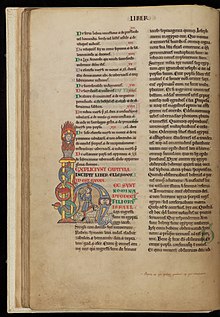
The dissolution of the monasteries, occasionally referred to as the suppression of the monasteries, was the set of administrative and legal processes between 1536 and 1541, by which Henry VIII disbanded monasteries, priories, convents, and friaries in England, Wales, and Ireland; expropriated their income; disposed of their assets; and provided for their former personnel and functions.

Walsingham is a civil parish in North Norfolk, England, famous for its religious shrines in honour of Mary, mother of Jesus. It also contains the ruins of two medieval monastic houses. Walsingham is 27 miles (43 km) northwest of Norwich.
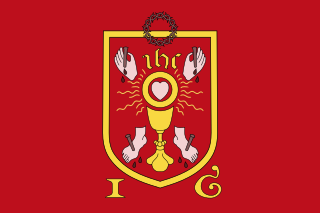
The Pilgrimage of Grace was a popular revolt beginning in Yorkshire in October 1536, before spreading to other parts of Northern England including Cumberland, Northumberland, Durham and north Lancashire, under the leadership of Robert Aske. The "most serious of all Tudor period rebellions", it was a protest against Henry VIII's break with the Catholic Church, the dissolution of the lesser monasteries, and the policies of the King's chief minister, Thomas Cromwell, as well as other specific political, social, and economic grievances.
Our Lady of Ipswich was a popular English Marian shrine before the English Reformation. Among Marian shrines, only the shrine at Walsingham attracted more visitors.

Our Lady of Walsingham is a title of Mary, mother of Jesus venerated by Catholics and High Church Anglicans associated with the Marian apparitions to Richeldis de Faverches, a pious English noblewoman, in 1061 in the village of Walsingham in Norfolk, England. Lady Richeldis had a structure built named "The Holy House" in Walsingham which later became a shrine and place of pilgrimage.

Whithorn Priory was a medieval Scottish monastery that also served as a cathedral, located at 6 Bruce Street in Whithorn, Wigtownshire, Dumfries and Galloway.

Thetford Priory is a Cluniac monastic house in Thetford, Norfolk, England. Founded in 1103 by Roger Bigod of Norfolk, Thetford was one of the most important monasteries of East Anglia.
Southwick Priory or Our Lady at Southwick was a priory of Augustinian canons founded in Portchester Castle on Portsmouth Harbour and later transferred 2 miles (3.2 km) north to Southwick, Hampshire, England. It ceased at the Dissolution of the Monasteries in 1538.
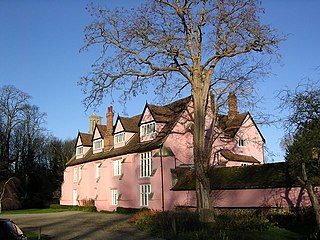
Clare Priory is a religious house in England, originally established in 1248 as the first house of the Augustinian Friars in England. It is situated on the banks of the River Stour, a short distance away from the medieval village of Clare, Suffolk. The friary was suppressed in 1538 and the property passed through many hands until it was again purchased by the Augustinian friars in 1953. Today the Priory offers modern retreat facilities for guests.
St Andrews Cathedral Priory was a priory of Augustinian canons in St Andrews, Fife, Scotland. It was one of the great religious houses in Scotland, and instrumental in the founding of the University of St Andrews.
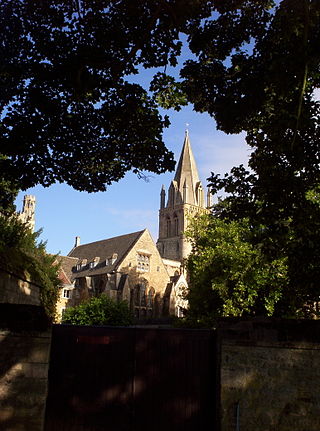
St Frideswide's Priory was established as a priory of Augustinian canons regular in Oxford in 1122. The priory was established by Gwymund, chaplain to Henry I of England. Among its most illustrious priors were the writers Robert of Cricklade and Philip of Oxford.
Events from the 1530s in England.

The remains of St Mary's Abbey, of Kenilworth, Warwickshire, England are situated in the grounds of St Nicholas' Church and in an adjacent area of Abbey Fields. Some of its ruins are above ground and some are below ground.

The Basilica of Our Lady of Walsingham, informally known as the Slipper Chapel or the Chapel of Saint Catherine of Alexandria, is a Catholic basilica in Houghton Saint Giles, Norfolk, England. Built in 1340, it was the last chapel on the pilgrim route to Walsingham.

Walsingham was a popular Elizabethan ballad tune. There are various versions of the lyrics, which relate to a pilgrimage site, suppressed during the English Reformation.
Repton Priory was a priory in Repton, Derbyshire, England. It was established in the 12th century and was originally under the control of Calke Priory. It was dissolved in 1538.

Pentney Priory was an Augustinian priory at Pentney in the district of King's Lynn and West Norfolk, Norfolk, England. The ruins of the priory, mostly comprising the flint-built gatehouse, are Grade I listed.
Beck Hall, Bec Hall or Bek Hall is a grade II listed 18th-century farmhouse in Billingford, Breckland, Norfolk, England. It is believed to be on the site of a former "hospital" or "hospice" adjacent to the Chapel of St Paul. The hospital was founded by William of Bec : records go back before 1224. The hospital was dedicated to St Thomas of Canterbury. An early resident of Bec was Alanus Elfwold (1248).
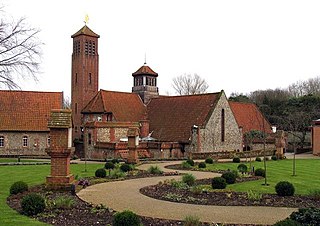
The Anglican Shrine of Our Lady of Walsingham is a Church of England shrine church built in 1938 in Walsingham, Norfolk, England. Walsingham is the site of the reputed Marian apparitions to Richeldis de Faverches in 1061. The Virgin Mary is therefore venerated at the shrine with the title of Our Lady of Walsingham.
St Mary and All Saints Church is the parish church of Little Walsingham in the English county of Norfolk. It is dedicated to the Virgin Mary and All Saints. Little Walsingham was the location of the shrine of Our Lady of Walsingham, destroyed at the Dissolution. The Anglican shrine was revived by Alfred Hope Patten, the Vicar of Little Walsingham, in 1922, and the image of Our Lady of Walsingham was in the church until its translation to the new priory in 1931.

